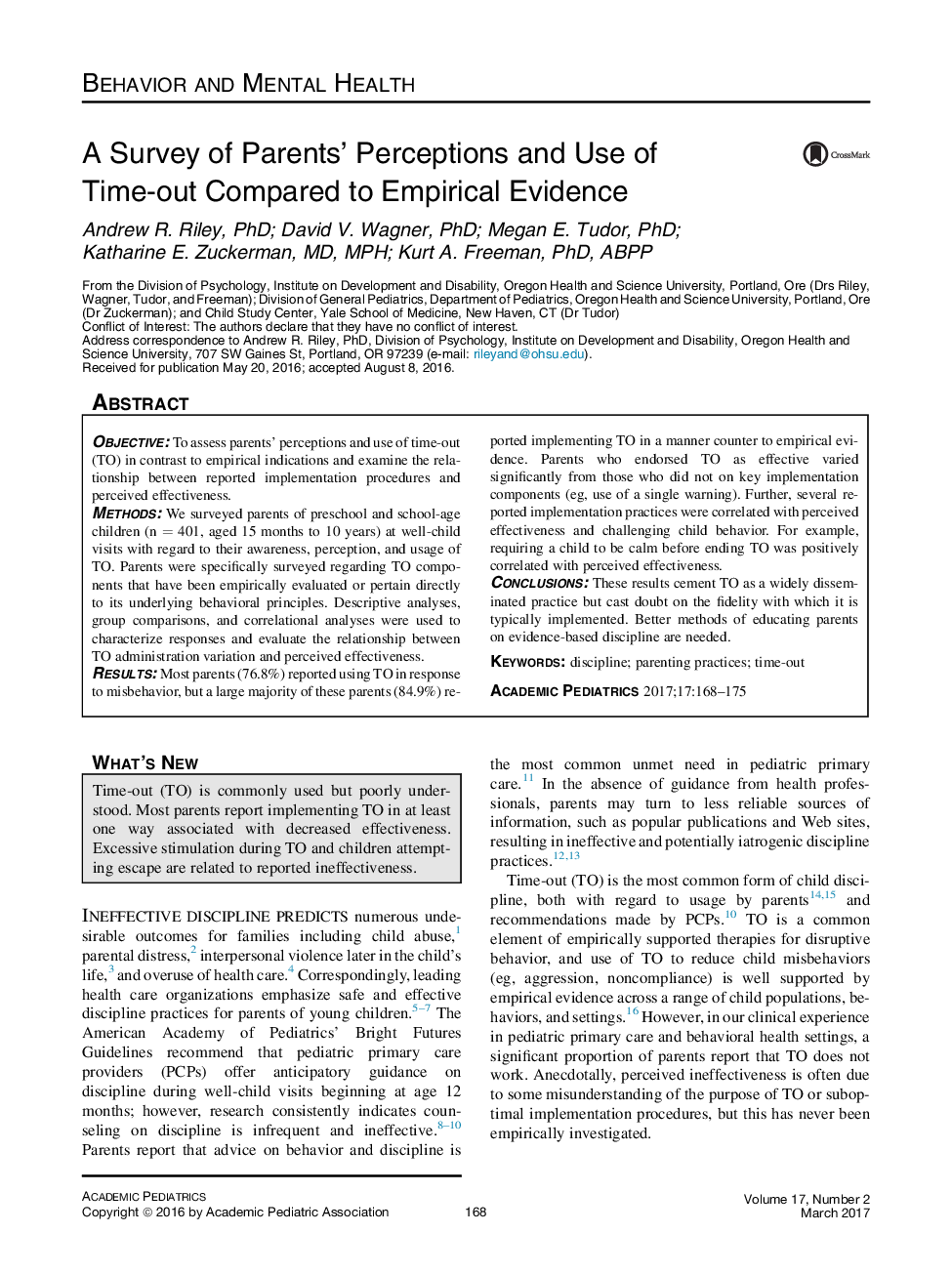| Article ID | Journal | Published Year | Pages | File Type |
|---|---|---|---|---|
| 5717047 | Academic Pediatrics | 2017 | 8 Pages |
ObjectiveTo assess parents' perceptions and use of time-out (TO) in contrast to empirical indications and examine the relationship between reported implementation procedures and perceived effectiveness.MethodsWe surveyed parents of preschool and school-age children (n = 401, aged 15 months to 10 years) at well-child visits with regard to their awareness, perception, and usage of TO. Parents were specifically surveyed regarding TO components that have been empirically evaluated or pertain directly to its underlying behavioral principles. Descriptive analyses, group comparisons, and correlational analyses were used to characterize responses and evaluate the relationship between TO administration variation and perceived effectiveness.ResultsMost parents (76.8%) reported using TO in response to misbehavior, but a large majority of these parents (84.9%) reported implementing TO in a manner counter to empirical evidence. Parents who endorsed TO as effective varied significantly from those who did not on key implementation components (eg, use of a single warning). Further, several reported implementation practices were correlated with perceived effectiveness and challenging child behavior. For example, requiring a child to be calm before ending TO was positively correlated with perceived effectiveness.ConclusionsThese results cement TO as a widely disseminated practice but cast doubt on the fidelity with which it is typically implemented. Better methods of educating parents on evidence-based discipline are needed.
